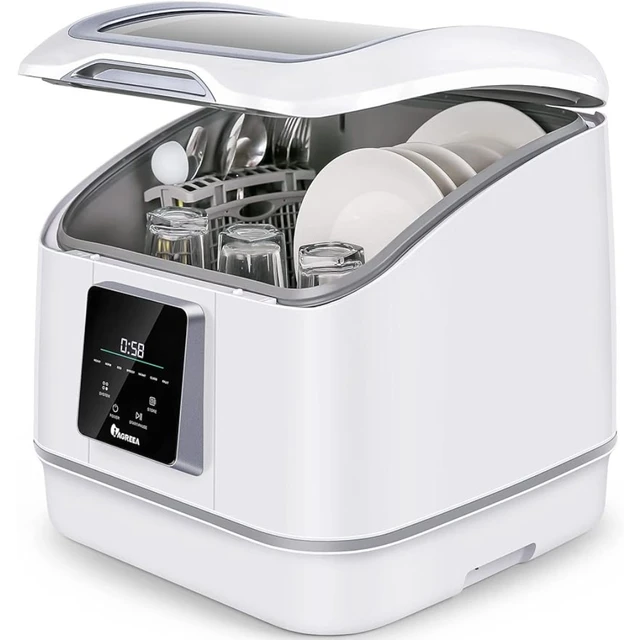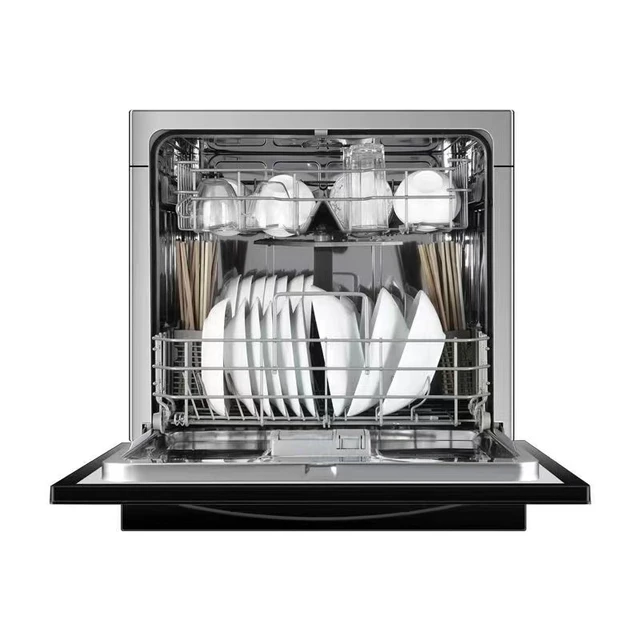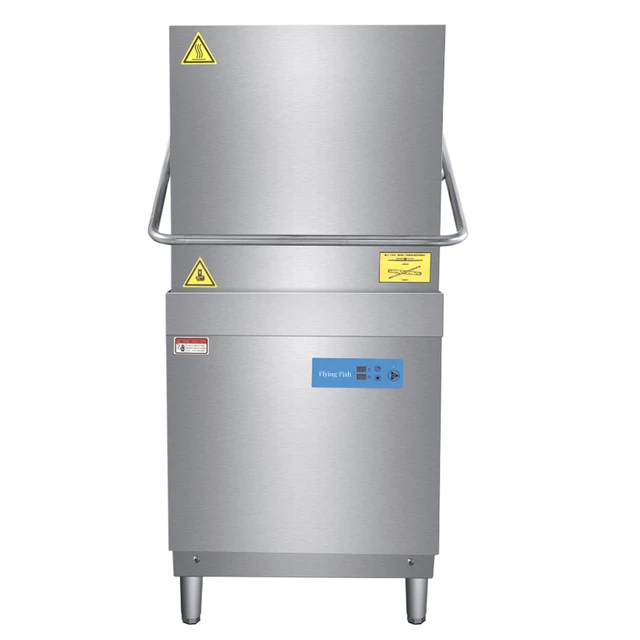
What are potential risks of performing a reset on a GE dishwasher?
Introduction
Performing a reset on a GE dishwasher can be a useful troubleshooting step to address operational issues. However, it is important to be aware of potential risks that may arise during the reset process. These risks can include loss of data, electrical hazards, and complications with the dishwasher’s functionality. In this guide, we will explore the potential risks associated with performing a reset on a GE dishwasher, providing specific details to help you understand and mitigate these risks effectively.

What are potential risks of performing a reset on a GE dishwasher?
Loss of Data or Settings
1.1. Resetting Customized Settings
Performing a reset on a GE dishwasher can result in the loss of any customized settings, such as delay start times, wash cycle preferences, or special options. These settings may need to be reprogrammed once the dishwasher has been reset.
1.2. Erasing Error Codes or Diagnostic Information
Resetting the dishwasher can erase any error codes or diagnostic information that may have been stored in the dishwasher’s memory. This can make it more challenging for technicians to diagnose persistent issues if they are unable to retrieve previous error codes or diagnostics.
Electrical Hazards
2.1. Power Cycling Risks
Power cycling the dishwasher as part of the reset process involves turning off and on the power supply. This can present potential electrical hazards, such as electric shock, if not performed safely. It is crucial to follow proper safety precautions and ensure that the dishwasher is properly disconnected from power sources before attempting a reset.
2.2. Improper Reset Techniques
Incorrectly performing a reset, such as pressing or holding the wrong buttons on the control panel, can lead to electrical hazards. If the wrong buttons are pressed or if the reset process is interrupted, it can trigger unexpected electrical responses or even damage the dishwasher’s electrical components.

Complications with Functionality
3.1. Potential Operational Issues
While a reset is intended to resolve operational issues, there is a risk that it may not fully address the underlying problem. In some cases, a reset may only provide a temporary solution, and the original issue may resurface. It is important to consider that a reset may not always be the definitive fix for complex or persistent problems.
3.2. Impact on Other Functions or Components
Resetting the dishwasher can potentially impact other functions or components, especially if there are underlying issues with the dishwasher’s hardware or software. It is essential to monitor the dishwasher’s performance after a reset to ensure that all functions are working as intended.
Damages to Dishwasher Components
4.1. Improper Handling
During the reset process, there is a risk of inadvertently mishandling the dishwasher, which can lead to damages. Mishandling includes applying excessive force to buttons, using sharp objects that may scratch the control panel, or disassembling components without proper knowledge or tools.
4.2. Impact on Mechanical Parts
Resetting the dishwasher may involve interrupting the regular operation of mechanical parts, such as pumps, motors, or valves. If these parts are not properly reset or if the reset process is performed incorrectly, it can potentially cause damages to these components, leading to malfunctions or decreased performance.

Mitigating Risks and Ensuring Safety
5.1. Follow Manufacturer’s Guidelines
Always refer to the dishwasher’s user manual or consult the manufacturer’s guidelines for specific instructions on performing a reset. These guidelines provide important safety information and model-specific reset procedures, helping to mitigate risks and ensure safe practices.
5.2. Disconnect Power Properly
When power cycling the dishwasher as part of the reset process, ensure that the dishwasher is properly disconnected from power sources. Unplug the dishwasher from the electrical outlet or switch off the circuit breaker that supplies power to the dishwasher. This prevents any electrical hazards during the reset.
5.3. Exercise Caution and Patience
When performing a reset, exercise caution and patience to avoid any mishandling or unintended damages. Follow the reset instructions step by step, ensuring that the correct buttons are pressed or procedures are followed. Take your time and avoid rushing through the reset process.
5.4. Monitor Performance and Seek Professional Help
After performing a reset, closely monitor the dishwasher’s performance to ensure that all functions are working correctly. If the original issue persists or new problems arise, it is advisable to seek professional help. A qualified technician can diagnose and address underlying issues that may require specialized knowledge or repairs.

Consult the Manufacturer or Professional Support
6.1. Contact GE Customer Support
If you encounter any difficulties or have concerns about performing a reset on your GE dishwasher, it is advisable to reach out to GE customer support. They can provide further guidance, answer any questions, and offer assistance specific to your dishwasher model. GE customer support is well-equipped to address concerns regarding the reset process and can provide additional troubleshooting steps if needed.
6.2. Seek Professional Help
If you are unsure about performing a reset on your own or if the reset does not resolve the issue, it may be necessary to seek professional help. Contact a certified technician or a GE authorized service provider who has the expertise and experience to diagnose and repair complex problems. They can ensure that the reset is performed correctly and address any underlying issues that may be causing the operational problems with your dishwasher.
Consider Alternatives before Resetting
7.1. Routine Maintenance and Cleaning
Before resorting to a reset, consider routine maintenance and cleaning as potential solutions to common dishwasher issues. Regularly clean the filter, remove any clogs from spray arms, and inspect and clean the dishwasher’s interior for any debris or residue. Sometimes, these simple maintenance tasks can resolve common problems without the need for a reset.
7.2. Check Water Supply and Settings
Issues with water supply or incorrect dishwasher settings can impact the dishwasher’s performance. Ensure that the water supply to the dishwasher is adequate and free from any obstructions or restrictions. Additionally, verify that the dishwasher settings, such as water temperature and cycle selection, are appropriate for the load being washed.
7.3. Verify Power Supply
In some cases, operational issues may be caused by power supply problems. Ensure that the dishwasher is properly connected to a stable power source and that there are no electrical issues in your home’s electrical system. Fluctuations or interruptions in power supply can affect the dishwasher’s performance.
Understanding Warranty Information
8.1. Read the Warranty Documentation
Familiarize yourself with the warranty information provided by GE for your dishwasher. The warranty documentation contains important details about coverage, limitations, and procedures for obtaining service or repairs. It may also include specific instructions or precautions related to performing a reset. Adhering to the warranty guidelines can help protect your rights as a consumer and ensure that any necessary repairs are performed by authorized technicians.
8.2. Avoid Voiding the Warranty
Be cautious when performing a reset or any other actions that may potentially void the warranty. For instance, unauthorized repairs, tampering with components, or using non-approved parts can impact the warranty coverage. If in doubt, consult the warranty documentation or contact GE customer support to ensure that your actions align with the warranty guidelines.

Conclusion
Performing a reset on a GE dishwasher can help troubleshoot operational issues, but it is important to be aware of potential risks. These risks can include the loss of data or settings, electrical hazards, complications with the dishwasher’s functionality, and potential damages to dishwasher components. By following safety guidelines, disconnecting power properly, exercising caution, and monitoring the dishwasher’s performance after a reset, you can mitigate risks effectively. If necessary, seek professional help for complex or persistent issues that may require specialized knowledge or repairs. By understanding the potential risks and taking appropriate precautions, you can perform a reset on your GE dishwasher safely and effectively.






